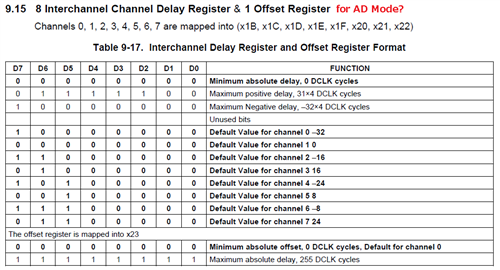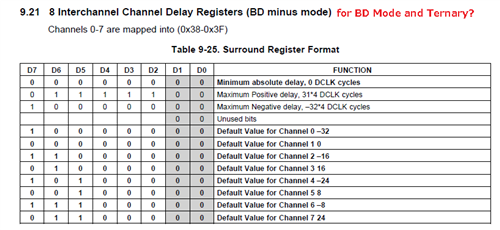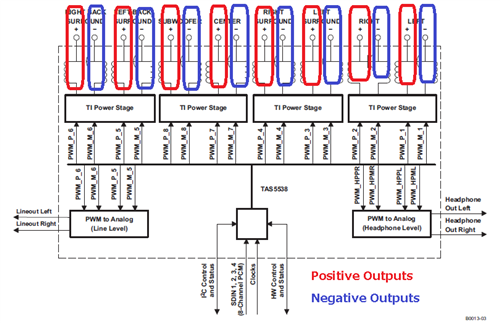Hi,
Could you please tell us your advice regarding TAS5538 and TAS5624A as below?
Q1. 8Interchannel Channel Delay Register for TAS5538
(a) Registers for AD Mode, BD Mode and Ternary
We believe that the interchannel delay registers are mapped into 0x1B to 0x22 for AD mode and are mapped into 0x38 to 0x3F for BD mode and ternary.
Is our understanding correct?
(b) Delay Adjustment of Each Positive Output and Negative Output for TAS5538
Can we independently adjust the delay of each positive output and negative output?
Please let us know that setting procedure if possible.
Q2. Inter Mux Registers for TAS5538(0x30 to 0x33)
Could you please tell us the logic to set AD mode and BD mode?
We believe that AD mode should be set D7 and D3 to 0b and BD mode should be set D7 and D3 to 1b.
Is our understanding correct?
Q3. All Registers which Should be Changed to Set BD Mode for TAS5538
Could you please tell us all registers which should be changed to set BD mode?
Q4. Connected Method of Mode Pins for TAS5624A
Could you please tell us whether the mode pins are directly able to be connected to DVDD or GND without the pull-up/down resistors?
We believe that the mode pins are directly able to be connected to DVDD or GND.
Is our understanding correct?
Q5. Pop Noise for TAS5538 and TAS5624A
The pop noise occurred with the test board of our customer if the mute pin is asserted to high or the soft mute(0x0F) is asserted to high for TAS5538.
Could you please tell us the workaround to improve that issue?
Best Regards,
Kato






